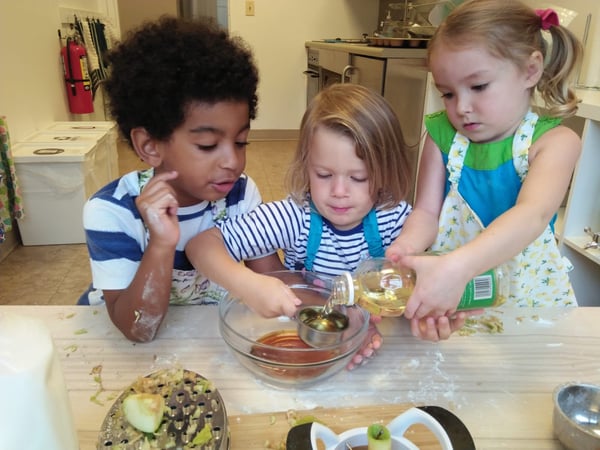Montessori learners have been busy in the kitchen! They’ve been slicing, measuring, grating, spreading, and, of course, eating (their favorite part). Participating in kitchen-centered activities is a fun and easy way to refine gross and fine motor skills, build concentration, and practice sequencing. For example, when we bake, we always separate our dry and wet ingredients. Don’t forget to taste and feel as you go—Is it sticky or soft? Does it taste savory or sweet?
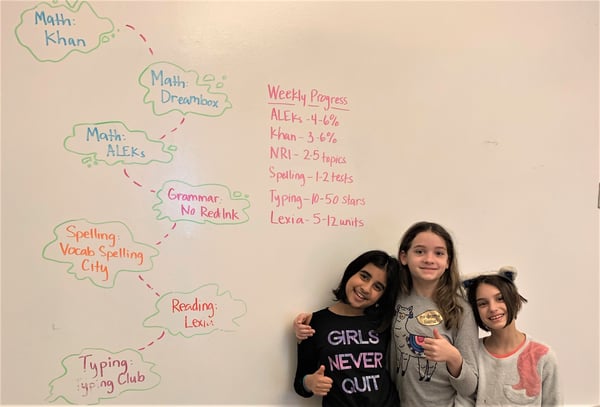
There are many ways learning is tracked in the elementary studio. Broadly speaking, learning is categorized in three ways: learning to learn, learning to do, and learning to be. LTL is factual knowledge and skills, LTD is the application of knowledge and skills to real-life situations, and LTB is the increased understanding of the self and the life one is leading based on evaluation and reflection. More specifically, learning is tracked through SMART goals, weekly progress meetings, badges, points, and now, weekly progress standards.
Every day at the beginning of core skills time, learners set SMART goals in their challenge zone. At the end of core skills time, learners complete the SMART goals by entering their progress. If they meet or exceed their goals, points are earned. One hour of focused work is worth about 20 points. Originally, learners had to reach a point goal in order to participate in Scholar’s Choice on Friday afternoons. Scholar’s Choice is a learner’s opportunity to expand their knowledge of a subject about which they are passionate; they can paint, read, practice a language, cook, or exercise. It’s also a mini-celebration of a week of hard work.
But points were proving to be an inaccurate and, at times, seemingly unfair representation of a learner’s work and progress that week. If a learner spends an hour practicing spelling, only to not pass the test at 100% and therefore earn zero points, is that an accurate assessment of determination, grit, and progress? If a learner spends most of the week working in Lexia, the reading program, because it’s in her comfort zone and has the highest potential for points earned, but does not make progress in any other program, does that align with the badge plan goals for the year? The learners thought definitely not.
So they decided to introduce a new process. While the learners continue to monitor points as one indicator of progress, they have created weekly progress standards for each of the seven online programs. For example, by the end of the week, a learner must increase three to six percent in Khan Academy and master two to five topics in No Red Ink, the grammar program. These ranges are in their challenge zone (just difficult enough to push them, but not so hard that they are too stressed to move forward) and give them a good idea of how much time they should be spending on each program to make progress across all subjects. The standards also reward perseverance; maybe on Tuesday you practiced for that spelling test and didn’t pass, but on Thursday you tried again and did. Now, if you meet the weekly progress standards, you are able to participate in Scholar’s Choice.
The new process has proven effective. Math percentages and grammar progress has increased while reading progress has stayed stable. The process will continue to be tweaked as learners move forward with their goals. Reflections have shown that flexibility and a wide definition of progress are great motivators for success.
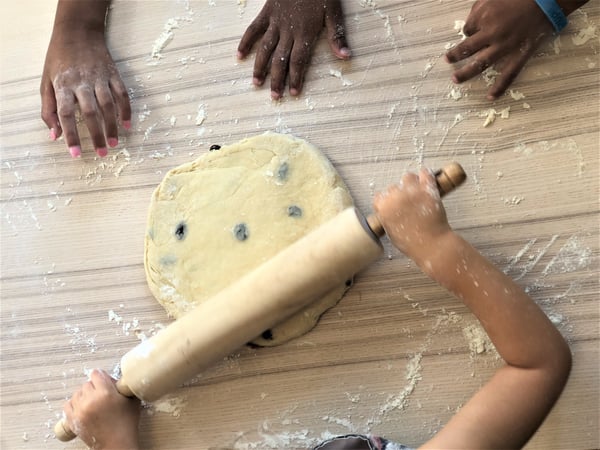
Snack in the Montessori studio is centered around simple, healthy foods the children can prepare and eat independently. Every day we have a carbohydrate such as multi-grain crackers or whole-wheat pita bread (cut into small pieces) accompanied by a spread like cream cheese or homemade hummus and a fruit or vegetable such as sliced apples or celery.
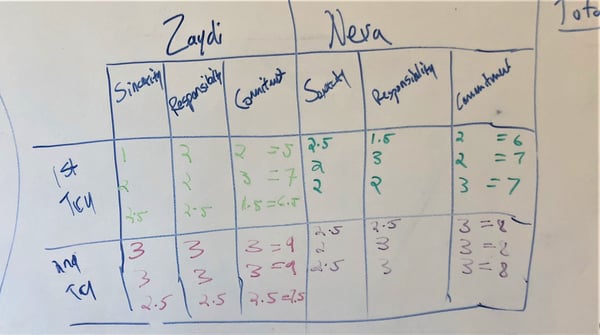
What happens when Acton learners don’t live up to their own commitments? Elementary learners practice a special tool for self-governance in the studio: an apology.
As a consequence for an incident of misrepresented work (a violation of their contract), two learners were given the choice: deliver an “excellent” apology, as judged by their peers, or forfeit the coveted “scholars’ choice” free time on Friday.
What makes an excellent apology? The learners were given a rubric of three factors: sincerity “be honest and genuine”; responsibility “take responsibility and don’t shift blame to others”; and commitment “promise to do better and commit to uphold the contract moving forward.” Peers rated each apology on a scale of 1 to 3 scale for each factor. Learners would need to earn a total of 24 points (an average 8 out 9 from each learner) to earn back their scholars’ choice time — a very high bar.
On the first try, one learner received a 18.5 apology and the other received a 20.5. Not enough! Do you want to try again? Yes.
So the learners coached each other, offering “warm, cool, warm” feedback for how they could do better. One learner suggested, “You’ve got to be honest and clean about exactly what happened.” Another learner suggested they be more specific on their commitment, “Which provision of the contract will you do better on?”
After a 5 minute hundle to practice, the learners tried again… and this time, they earned 25.5 and 24.5, improving by 7 and 4 points respectively! Everyone enjoyed a well-earned afternoon of scholars’ choice.
In contrast to the political non-apology apology — here in the heart of the town that invented it — it’s nice to see Acton learners hold themselves to a higher bar for an “honest and clean” apology.
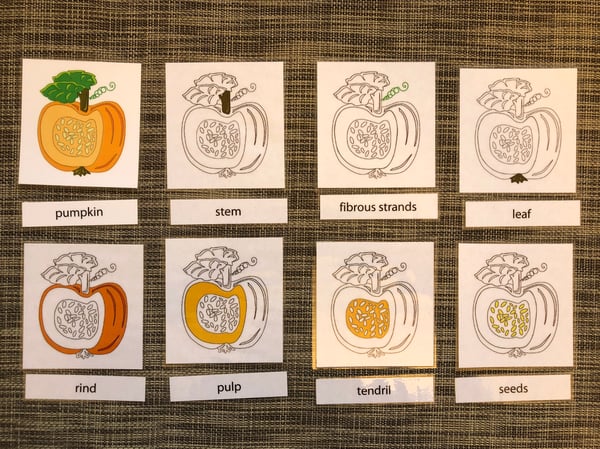
Montessori learners have been exploring the science of things around us. Where does something come from? How did it get here? Why does it look like that?

The hero’s journey is a metaphor that we reference often in the elementary studio. It is the foundation of “learning to be.” When we talk about growth mindset, character traits, flow, and focus, we discuss these philosophical concepts in relation to each learner’s unique hero’s journey.

In the Montessori studio, we explore different types of homes and houses found around the world. We start by defining a house, and after eliminating all the living creatures that do not live in houses (bats, squirrels, hammerhead sharks, and ladybugs, just to name a few), we concluded it is a place where humans live.
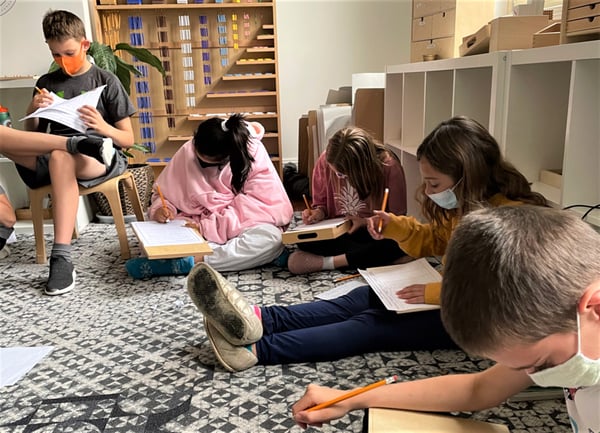
Learners in the Acton Elementary studio jumped right back into flow following spring break this week. There is a lot of work to be done before the end of the session! This week learners worked hard to prepare their proposals for the Acton Children’s Business Fair, write their folktales, and, for some, prepare for the Middle School launch.
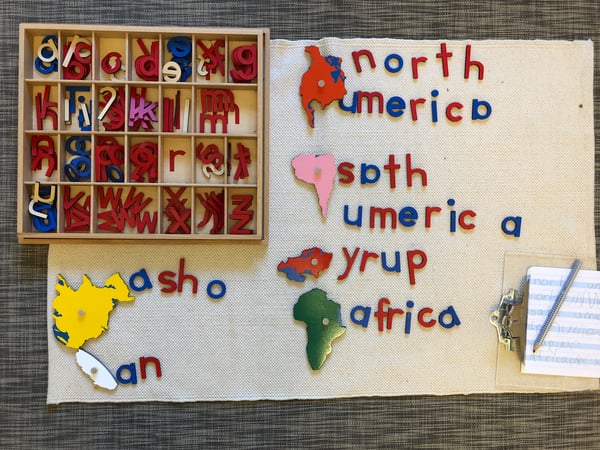
The Montessori studio houses all sorts of different projects and activities. One of our recent editions is a puzzle map of the world! Learners enjoy expanding their knowledge of the world we live in. Here is a fun example: A guide asked one of the learners where she went trick-or-treating, and she responded, “North America, and some in Australia.”
In Montessori, we start building geographical awareness by introducing our beautifully painted globe. We identify all the blue as water (oceans) and all the colored, raised parts as land (continents). With our new map of the world, we talk about how it represents the same forms on our globe, but it is as if the sphere has been cut into two halves and flattened. We share observations about the continents: Asia is the biggest continent; North America is touching South America; Australia is far away from North America. Finally, we learn songs about the continents to sing together!

Early Morning
Every morning begins with each child taking time to build self-care skills, such as putting on and taking off their shoes independently, zipping and unzipping their own jacket, and meeting their own human needs (using the bathroom, preparing food for a hungry belly, or pouring a glass of water to quench a thirst).
Group Gathering
Some days we start our morning by gathering together to read a book or have a group lesson. The group lessons are usually centered around the cultural unit we are studying. For example, we might introduce new language classification cards, such as the parts of an apple. Then we would dissect an apple to examine each part: What does the skin feel like? What does the pulp taste like? What are seeds for?
Independent Work and Lessons
The uninterrupted morning work cycle is one of the pillars of a successful, authentic Montessori environment. After our group gathering, the children engage in independent work, choosing among the materials/activities they’ve had a lesson on. Over the course of the morning, the guide gives children one-on-one lessons or offers them extensions of previously explored materials. This might be looking at quantity (counting) and then matching the quantity to the symbol (number), matching shapes from a distance, discovering which objects sink in water and which float, matching items from the studio to the color tablets, or learning to isolate sounds and connect them to their corresponding letters (movable alphabet). During the morning work cycle, learners have snack when they see the snack table is available and they have completed and put back whatever activity they were previously doing. They serve themselves and clean up independently.
Outside
We wind down our morning by singing a song and perhaps reading a book before changing shoes, using the bathroom, and then heading outdoors.
Lunch
After putting on their indoor shoes and washing their hands, the children set up the studio for lunch. They work together to move the tables and chairs. Then the children lay out their placemats and collect their lunchboxes. Once everyone is settled, we recite a poem together before we begin eating. Guides might offer a few suggestions for what they could talk about with their lunch partner, such as, What is your favorite activity to do outside? Share a time when you saw something you had never seen before.
Afternoon: Napping, Baking, Outside Activities
After lunch, we transition into nap time for younger learners and the afternoon work cycle for older learners. Sometimes the older learners prepare afternoon snack for everyone. They might make muffins, zucchini bread, or pizza, all from scratch. When the nappers awake, all the children enjoy an afternoon snack together. After snack, we head outside for play and arts and crafts. If poor weather conditions prevent us from being outside for long periods of time, we do similar activities inside.
